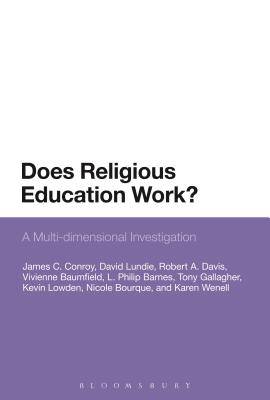
- Afhalen na 1 uur in een winkel met voorraad
- Gratis thuislevering in België vanaf € 30
- Ruim aanbod met 7 miljoen producten
- Afhalen na 1 uur in een winkel met voorraad
- Gratis thuislevering in België vanaf € 30
- Ruim aanbod met 7 miljoen producten
Zoeken
Does Religious Education Work?
A Multi-Dimensional Investigation
James C Conroy, Karen J Wenell, David Lundie
Hardcover | Engels
€ 339,45
+ 678 punten
Uitvoering
Omschrijving
This ground-breaking volume draws upon a rich and variegated range of methodologies to understand more fully the practices, policies and resources available in and to religious education in British schools. The descriptions, explanations and analyses undertaken here draw on an innovative combination of policy work, ethnography, Delphi methods, Actor Network Theory, questionnaires, textual analysis as well as theological and philosophical insight. It traces the evolution of religious education in a post-religious age from the creation of policy to the everyday experiences of teachers and students in the classroom. It begins by analysing the way in which policy has evolved since the 1970s with an examination of the social forces that have shaped curriculum development. It goes on to explore the impact and intentions of a diverse group of stakeholders with sometimes competing accounts of the purposes of religious educations. It then examines the manner in which policy is, or is not, enacted in the classroom. Finally, it explores contradictions and confusions, successes and failures, and the ways in which wider public debates enter the classroom. The book also exposes the challenge religious education teachers have in using the language of religion.
Specificaties
Betrokkenen
- Auteur(s):
- Uitgeverij:
Inhoud
- Aantal bladzijden:
- 280
- Taal:
- Engels
Eigenschappen
- Productcode (EAN):
- 9781441127990
- Verschijningsdatum:
- 19/12/2013
- Uitvoering:
- Hardcover
- Formaat:
- Genaaid
- Afmetingen:
- 155 mm x 234 mm
- Gewicht:
- 566 g

Alleen bij Standaard Boekhandel
+ 678 punten op je klantenkaart van Standaard Boekhandel
Beoordelingen
We publiceren alleen reviews die voldoen aan de voorwaarden voor reviews. Bekijk onze voorwaarden voor reviews.








